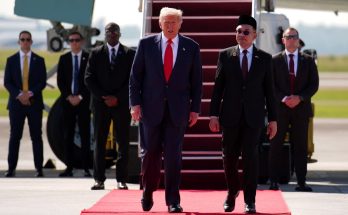
When the Polar Satellite Launch Vehicle (PSLV) C37 was successfully launched carrying 104 satellites, an overwhelming majority of them aimed at foreign customers, from Satish Dhawan Space Centre in Sriharikota in southern state of Andhra Pradesh, on February 16, it marked a major milestone for India’s state-owned space agency ISRO. It was a stunning feats as this is the highest number of satellites put into orbit by any country in one go. The previous international record of launching 27 satellites in a single payload was held by Russia for less than three years.
Space Business
But clearly, for India, the significance of the event goes much beyond statistics. The February 16 launch put India decisively in the big league of the world’s burgeoning global space industry, now estimated at $300 billion, for a much bigger share.
Of the satellites launched by Indian Space Research Organization on February 16, all except three are international customers. The rocket’s main cargo was a 714 kg satellite for earth observation and the rest were nano satellites weighing 664kg. Out of the 101 nano satellites, 96 were from the US and one each from Israel, Switzerland, The Netherlands, the United Arab Emirates and Kazakhstan.
The global business of launching commercial satellites is steady growing over the decades as countries across the world and phone and Internet companies seek greater and more high-tech communications.
ISRO an iconic brand
The launch of the 104 satellites has undoubtedly further cemented India’s position as a key player in global commercial space market meant for communication and surveillance. What makes ISRO an iconic brand in the market is that the Feb 16 feat was yet another reinforcement of its reputation as a frugal space agency.
ISRO’s low-budget satellite-launch programmes had last year attracted foreign clients to inject 75 satellites into the orbit. It is precisely this which has given India a clear edge over other international competitors for a greater slice of that launch market.
More bang than buck
ISRO’s commercial arm, Antrix Corporation, has charged about $3 million to send a satellite into space in recent years, far less than private companies. What made this possible was the ability to reuse components and some government subsidies.
Prime Minister Narendra Modi, who termed the launch as a “monumental accomplishment,” was bang on target when he had said in 2014 after India had sent an unmanned rocket to the Mars, the first by an Asian country, at just $73 million that it had cost less than making a Hollywood movie like “Gravity.” After all, the NASA’s Mars mission had a price tag of $671 million.
The ISRO’s feat once again drives home the point why South Asian countries should respond positively to Mr Modi’s proposal for a SAARC satellite for multi-purpose functions, including communication among the eight countries of the region, weather forecasts and warning of possible cyclone and tsunami threats.
Another key reason why the launch of the 104 satellites in one shot was historic for India is that the exercise was fraught with risks of releasing so many satellites in quick succession without one colliding with the other. So, when ISRO Chairman Kiran Kumar quipped that launching this number of satellites in one go was like “allowing birds to fly in space,” he sounded like a happy man soaking in his moment of triumph after experiencing tensions before the launch.
Author Profile
- India Writes Network (www.indiawrites.org) is an emerging think tank and a media-publishing company focused on international affairs & the India Story. Centre for Global India Insights is the research arm of India Writes Network. To subscribe to India and the World, write to editor@indiawrites.org. A venture of TGII Media Private Limited, a leading media, publishing and consultancy company, IWN has carved a niche for balanced and exhaustive reporting and analysis of international affairs. Eminent personalities, politicians, diplomats, authors, strategy gurus and news-makers have contributed to India Writes Network, as also “India and the World,” a magazine focused on global affairs.
Latest entries
 India and the WorldNovember 26, 2025G20@20: Africa’s Moment – The Once and Future World Order
India and the WorldNovember 26, 2025G20@20: Africa’s Moment – The Once and Future World Order DiplomacyOctober 4, 2025UNGA Resolution 2758 Must Not Be Distorted, One-China Principle Brooks No Challenge
DiplomacyOctober 4, 2025UNGA Resolution 2758 Must Not Be Distorted, One-China Principle Brooks No Challenge India and the WorldJuly 26, 2025MPs, diplomats laud Operation Sindoor, call for national unity to combat Pakistan-sponsored terror
India and the WorldJuly 26, 2025MPs, diplomats laud Operation Sindoor, call for national unity to combat Pakistan-sponsored terror India and the WorldJuly 25, 2025When Fire Ends, Diplomacy Begins
India and the WorldJuly 25, 2025When Fire Ends, Diplomacy Begins







